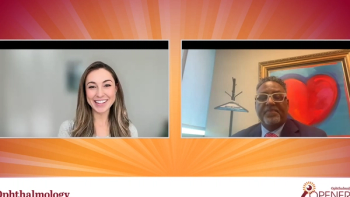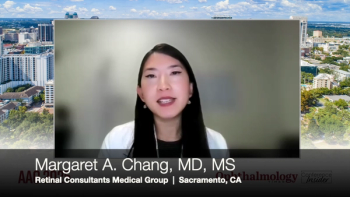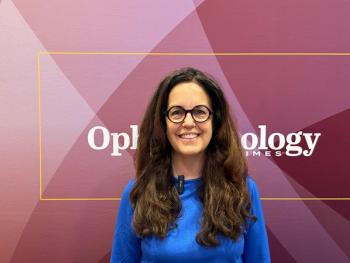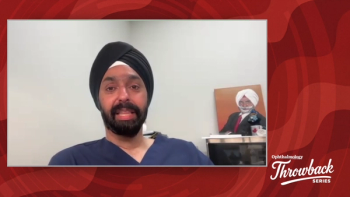
Ocular surface involves more than lacrimal gland output, tear evaporation rate
Joseph Tauber, MD, has found in his experience as an active clinical research that listening to patients may be the greatest diagnostic tool for ocular surface disease.
Take-home message: Joseph Tauber, MD, has found in his experience as an active clinical research that listening to patients may be the greatest diagnostic tool for ocular surface disease.
Anterior Segment Techniques By Joseph Tauber, MD
As a clinician who has spent much of the past 25 years treating diseases of the ocular surface, I’ve witnessed great changes in many aspects of this category. The nomenclature has changed-from “dry eye” to “dysfunctional tear syndrome” to my preferred term, “ocular surface disease” (OSD).
While much has been written about differentiating between aqueous-deficient dry eye and evaporative dry eye, the more global OSD is intended to recognize that the pathophysiology of ocular surface-related irritative symptoms is multifactorial, and involves more than just the lacrimal gland output and the tear evaporation rate.
Despite the great strides of the past 15 years-particularly the understanding that inflammation is a key driver of symptoms in all patients with OSD (not only those with autoimmune diseases)-much remains speculative or completely obscure. I have been an active clinical researcher for many years, and I continue to struggle with questions about what really generates symptoms in my patients with OSD.
Today’s OSD specialist
The OSD specialist in 2015 incorporates measurements of tear osmolarity, tear MMP-9, IgE,and lactoferrin, and imaging studies of the meibomian glands and the thickness of the tear lipid layer. Though I rely on my skills as a clinician at listening and looking (taking a thorough history and doing a complete patient examination) more than any of the above tests, I have incorporated some of these into my approach to patient care in OSD.
Just to be sure I put an exclamation mark on this point-testing can never substitute for a well-taken history and a good eye examination! I believe that if a test allows the clinician a choice between two alternative paths (whether diagnostically or therapeutically), then it is worthwhile. However, if the clinician will follow the same path regardless of the test result, then it is likely unnecessary.
I feel that the higher sensitivity of detection of Sjogren’s syndrome afforded by using a test1 (SJO test, Nicox) has helped me identify this important systemic disease in many patients who had been undiagnosed by standard SS-A and SS-B screening tests. My skepticism at claims that 10% of all patients with dry eye have Sjogren’s syndrome was misplaced, and I am a strong advocate of aggressively searching for this disease.
The two diagnostic tests that I use with regularity are tear osmolarity (TearLab) and lipid layer thickness measurement (LipiView).
Tear osmolarity
Many articles have written about the challenges of reproducibility of tear osmolarity measurements, but well-conducted studies have shown that tear osmolarity is a measure that correlates better with patient symptoms than any other clinical parameter.2
Changes in tear osmolarity correlate with subjective response to treatment with cyclosporine3 (Restasis, Allergan), allowing this test to help as a measure of therapeutic efficacy. I cannot think of many instances when osmolarity testing helped me make a diagnosis of dry eye, but it greatly facilitates communicating the nature of OSD to patients, and has real value as a measure of therapeutic effect.
Lipid layer thickness measurement
Imaging4 (LipiView) of the lipid layer thickness (and a measure of blink completeness) has greatly facilitated my patient communications about the role of lipids on the ocular surface and the role of blinking/tear spreading. Patients are quite convinced by the quantitation of their own lipid layer thickness, and this test helps me join the discussion of evaporative dry eye to the better-understood notion of tear under-production.
Because 50% to 70% of patients suffer from some combination of these two aspects of OSD, explaining this in a meaningful way is necessary to get patients to buy into treatment plans that target each of these pathogenic mechanisms.
In my practice, my most useful diagnostic tool is still my ability to listen to my patients, and match the pattern of their symptoms/findings to the treatment paradigm they need.
Not every patient needs to perform lid hygiene or get meibomian gland duct probing, but their complaints of burning may never be relieved until that aspect of their OSD is addressed. I get great value out of the diagnostic tools I have in my office for OSD, but none compare with my skills as a clinician-listening to my patients.
References
1. Shen L, et al. Novel autoantibodies in Sjogren’s Syndrome. Clin Immunol. 2012;145:251-255.
2. Lemp MA, Bron AJ, Baudouin C, et. Al. Tear osmolarity in the diagnosis and management of dry eye disease. Am J Ophthalmol. 2011;151:792-798.
3. Sullivan BD, Crews LA, Sonmez B. et al. Clinical utility of objective tests for dry eye disease: variability over time and implications for clinical trials and disease management. Cornea. 2012;31:1000-1008.
4. Finis D, Pischel N, Schrader S, et. al. Evaluation of lipid layer thickness measurement of the tear film as a diagnostic tool for meibomian gland dysfunction. Cornea. 2013;32:1549-1553.
Joseph Tauber, MD, is medical director of Tauber Eye Center, Kansas City, MO, where he is an anterior segment subspecialist and refractive surgeon.
Ernest W. Kornmehl, MD, editor of the “Anterior Segment Techniques” column, reviewed this article. Dr. Kornmehl is
Newsletter
Don’t miss out—get Ophthalmology Times updates on the latest clinical advancements and expert interviews, straight to your inbox.



















































.png)


